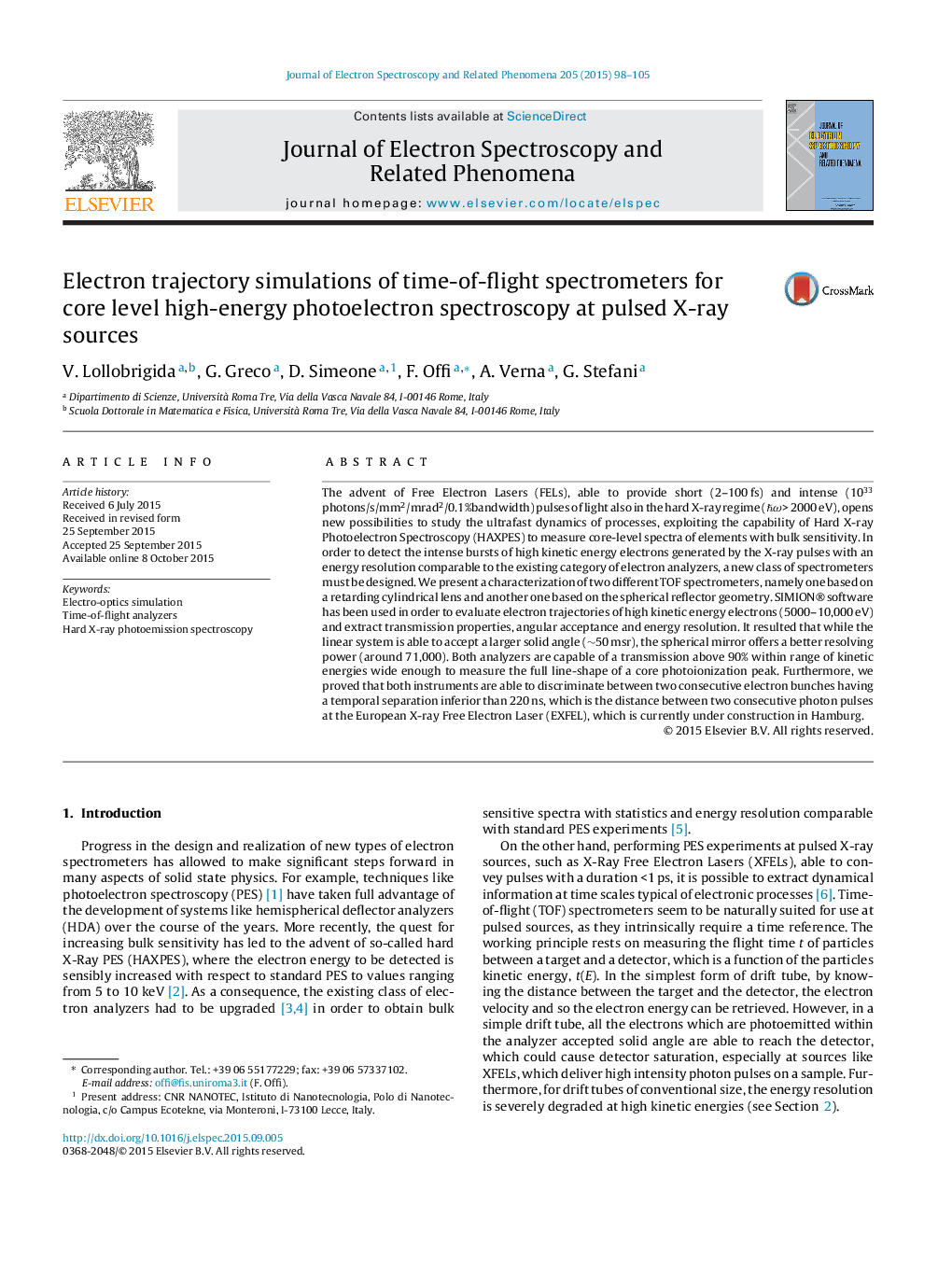| Article ID | Journal | Published Year | Pages | File Type |
|---|---|---|---|---|
| 5395741 | Journal of Electron Spectroscopy and Related Phenomena | 2015 | 8 Pages |
Abstract
The advent of Free Electron Lasers (FELs), able to provide short (2-100 fs) and intense (1033 photons/s/mm2/mrad2/0.1%bandwidth) pulses of light also in the hard X-ray regime (âÏ> 2000 eV), opens new possibilities to study the ultrafast dynamics of processes, exploiting the capability of Hard X-ray Photoelectron Spectroscopy (HAXPES) to measure core-level spectra of elements with bulk sensitivity. In order to detect the intense bursts of high kinetic energy electrons generated by the X-ray pulses with an energy resolution comparable to the existing category of electron analyzers, a new class of spectrometers must be designed. We present a characterization of two different TOF spectrometers, namely one based on a retarding cylindrical lens and another one based on the spherical reflector geometry. SIMION® software has been used in order to evaluate electron trajectories of high kinetic energy electrons (5000-10,000 eV) and extract transmission properties, angular acceptance and energy resolution. It resulted that while the linear system is able to accept a larger solid angle (â¼50 msr), the spherical mirror offers a better resolving power (around 71,000). Both analyzers are capable of a transmission above 90% within range of kinetic energies wide enough to measure the full line-shape of a core photoionization peak. Furthermore, we proved that both instruments are able to discriminate between two consecutive electron bunches having a temporal separation inferior than 220 ns, which is the distance between two consecutive photon pulses at the European X-ray Free Electron Laser (EXFEL), which is currently under construction in Hamburg.
Related Topics
Physical Sciences and Engineering
Chemistry
Physical and Theoretical Chemistry
Authors
V. Lollobrigida, G. Greco, D. Simeone, F. Offi, A. Verna, G. Stefani,
